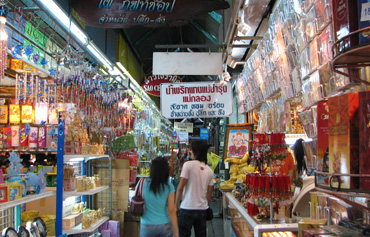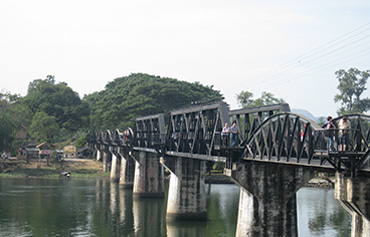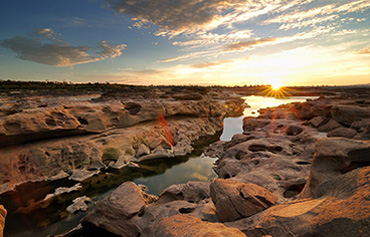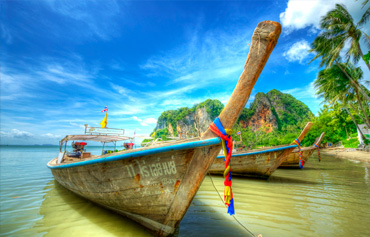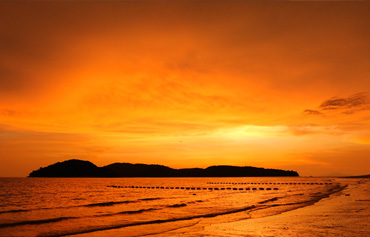THAILAND GENERAL INFO
Location
Capital
Historical Background
Climate
Population
Language
Religion
Business Hours
Seasons
- Hot : March to May, average temperature is about 34 ºC
- Rainy : June to October average temperature is about 29 ºC
- Cool : November to February, average temperature ranges from 20ºC to 32ºC
Clothing
Foreign Currency Declaraton
Electricity
Banks
Currency
1 Baht = 100 satangs
Bank Notes : 20, 50, 100, 500 and 1,000 Baht
Coins : 1, 5, and 10 baht
TRAVEL & ACCOMMODATION
The TIJ will sponsor meals, single-occupancy accommodation*, a round-trip international flight to/from Thailand, airport transfers and course materials for all admitted participants.
A round-trip airfare will be reimbursed up to USD 800. Admitted participants who require a visa to enter Thailand are responsible for their own visa application and applicable fees. The TIJ will issue a visa support letter upon request.
*Please be noted that priority for single-occupancy accommodation will be given to admitted applicants travelling from outside of Bangkok, Thailand.
Admitted participants who require a visa to enter Thailand are responsible for their own visa applications and applicable fees. The TIJ will issue a visa support letter upon request. Airport transfer between the airport and the accommodation will be provided.
Arnoma Grand Bangkok
99 Ratchadamri Road,
Pathumwan, Bangkok 10330, Thailand
Tel: +66 (0) 2655 5555
Fax: +66 (0) 2655 7555
Situated in the heart of Bangkok’s Central Business area and surrounded by some of Bangkok’s most prestigious Business Addresses, Arnoma Grand Bangkok is also across the road from Centralworld’s 400 Shops and Restaurants, close to some of Asia’s most renowned Designer Malls, and just around the corner from the BTS Sky train which will whisk you all over Bangkok in minutes.
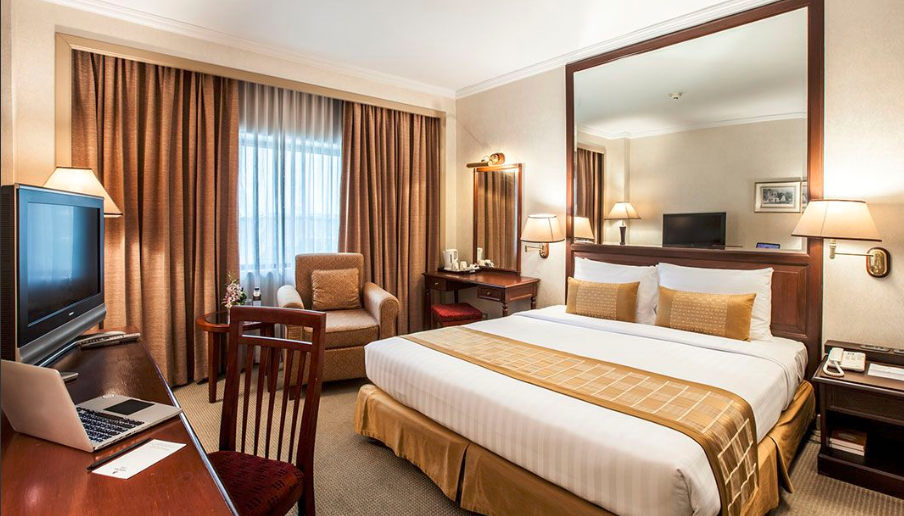
Access the hotel from Survarnabhumi International Airport
By public transit train – take the escalator down from the Arrival Hall to entry the Airport Rail Link (ARL) which located on the first floor, then take a ride from Suvarnabhumi to Makkasan station. Then walk further from ARL Makkasan exit about 450 meters to take the BTS to Chitlom station (exit 6), then walk around 5-10 mins to the hotel
By public metered taxi – look for the taxi stand signage at the second floor then join the taxi queue. The metered fare from the airport to the hotel is usually around THB 400-500 including the tolls and airport surcharge.
Access the hotel from Don Muang International Airport
By public metered taxi – Taxi stand located in front of the Arrival Halls International & Domestic Passenger Terminals. The metered fare from the airport to the hotel is usually around THB 400-500 including the tolls and airport surcharge.
LOCAL TRANSPORTATION
There are many transportation means to get you around the city, making any trip convenient and enjoyable. Most of public transportations provide are inexpensive such as Tuk-Tuk, Metered taxi, BTS sky train, MRT underground, etc.
BTS
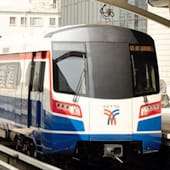 This BTS sky train has been designed to help you discover all the interesting sites and activities around Bangkok. It is a cheap, smooth, cool, clean and fast, it operates from 06.00 – 24.00 every day. The train is pretty full during peak hours 07.00 – 09.00 and 16.00 – 19.00 as the BTS has become a primary means of transport for people living and working in downtown Bangkok. For more information about the routes and fares, please visit www.bts.co.th
This BTS sky train has been designed to help you discover all the interesting sites and activities around Bangkok. It is a cheap, smooth, cool, clean and fast, it operates from 06.00 – 24.00 every day. The train is pretty full during peak hours 07.00 – 09.00 and 16.00 – 19.00 as the BTS has become a primary means of transport for people living and working in downtown Bangkok. For more information about the routes and fares, please visit www.bts.co.th
Explore Bangkok by BTS Click here
MRT
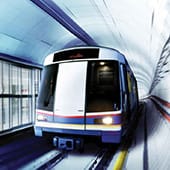
Fast and efficient, the Mass Rapid Transit network (MRT) serves 18 stations and stretches for 20 km. in horseshoe shape from Hua Lumphong in the South (near Chinatown) to Bang Sue in the North. Trains arrive every 5-7 minutes, and connect to the BTS sky train at Sukhumvit and Silom stations. For more information about the routes and fares, please visit www.bangkokmetro.co.th
Airport Rail Link
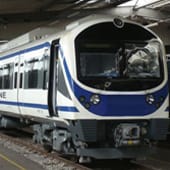
Airport Rail Link connects Suvarnabhumi Airport with downtown Bangkok. The train ride only takes 15-30 minutes from the airport. The Airport Rail Link station in Phaya Thai is connected to the BTS, while the station in Makassan is just walking distance from the MRT. The train service runs from 06.00 to midnight. For more information please visit www.srtet.co.th/en/index.html
Tuk-Tuk
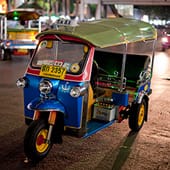
The open-air three wheels or Tuk-Tuk is popular among foreigners for short trip around the city, although they are most of the time more expensive than taxi. Expect to pay 40 Baht and upwards for a short journey, unless you are a good bargainer.
Taxi
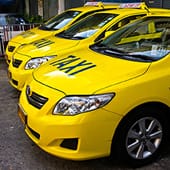
With radio and meter, air-conditioned taxi is cheap, plentiful and comfortable. Those with red light in front are vacant and stop for you instantly. The fare is from 35 Baht for the first 3 kilometers and the rate rises at 2 Baht increments








